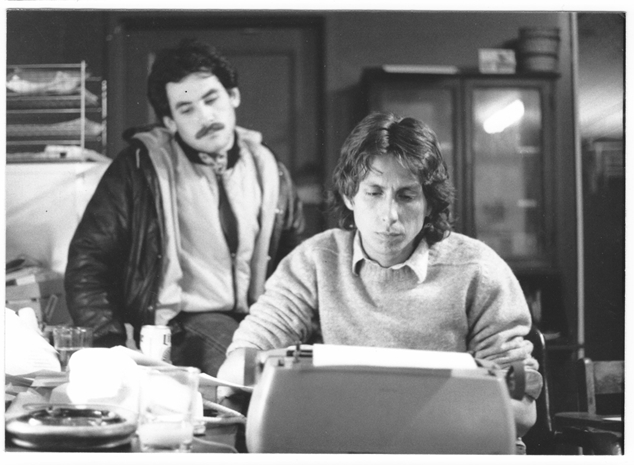 34 years ago the first safe sex booklet, “How to Have Sex in an Epidemic: One Approach”, was produced and 5000 copies of the forty-page booklet disseminated through New York City in response to the beginning of the AIDS epidemic.
34 years ago the first safe sex booklet, “How to Have Sex in an Epidemic: One Approach”, was produced and 5000 copies of the forty-page booklet disseminated through New York City in response to the beginning of the AIDS epidemic.
The authors, Richard Berkowitz and Michael Callen, were both living with AIDS (they were also part of the first wave of activism of people living with HIV/AIDS, forming the Denver Principles), the former self-described as a ‘hustler’ specialising in leather-bound dominating sadomasochism, and the latter a bathhouse bottom.
The two met through their doctor, Joseph Sonnabend, in Greenwich village, and the trio worked together to produce a number of articles, leading up to the safe sex booklet.
Sonnabend believed that AIDS was caused by multiple concurrent factors which depleted the immune system, particularly the transmission of Cytomegalovirus (CMV) – he was against the viral theory beginning to emerge to explain AIDS – what would become known as HIV in 1986 (previously known as HTLV-III/LAV in 1984)
While history would prove the trio wrong in their explanation of AIDS, the prevention advice they disseminated through advising condom usage and non-penetrative sexual activity as ways of preventing CMV transmission would become the cornerstone of HIV prevention.
Proponents of the viral theory in the early-mid 1980s were uncertain about what bodily fluids HIV was contained in, and all they knew was that sexual transmission and injecting drug usage were definite factors. The only advice they could offer was to avoid sex or be monogamous, and neither of these options were particularly appealing to the gay community.
Berkowitz and Callen were able to provide systematic advice for almost every sexual act and scenario you could think of – sucking and being sucked, topping, bottoming, rimming, water sports, sex toys, sex work (and buying sex), fisting, mutual masturbation, going to saunas and other sex on premise venues, sadomasochism, using amyl nitrates (‘poppers’), kissing, anonymous/casual sex, and sex while living with AIDS.
Instead of offering abstinence or partner reduction/monogamy, which most other health professionals and gay leaders offered at the time, Berkowitz and Callen radically suggested the adoption of alternative protective techniques and behaviours to gay men’s existing sexual mores in order to reduce the epidemic.
Importantly, they also stressed that ‘partner reduction’ (i.e. “stop being so promiscuous!”) on its own would not protect a person, as the partner/s they limit themselves to might already be exposed. The booklet can best be summarised,
“As you read on, we hope we make at least one point clear: Sex doesn’t make you sick – diseases do. Gay sex doesn’t make you sick – gay men who are sick do. Once you understand how diseases are transmitted, you can begin to explore medically safe sex.
Our challenge is to figure out how we can have gay, life-affirming sex, satisfy our emotional needs, and stay alive!”
If we changed ‘CMV’ to ‘HIV’, and removed urine and saliva as transmissible body fluids, the advice they offer us would still be as relevant to HIV prevention today – with the exception of Pre-exposure Prophylaxis, Post-exposure Prophylaxis, and Treatment as Prevention (or Undetectable Viral Load).
Most powerfully, at the end of the booklet, Berkowitz and Callen lament that they have talked about sex for 40 pages without mentioning the word ‘love’. Radically, they argue that as men we are socialised into competing with and consuming one another, and they offer a revolutionary point – “If you love the person you are fucking with—even for one night—you will not want to make them sick.”
While much has changed in 34 years of HIV/AIDS, there’s a radical spirit to “How to Have Sex in an Epidemic” that we (the gay community) could tap into.
Anthony K J Smith




